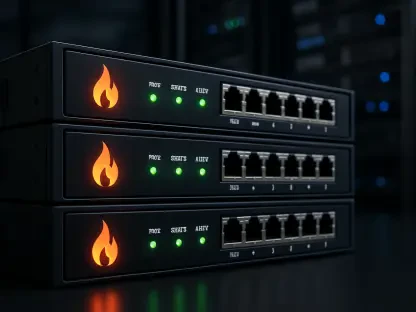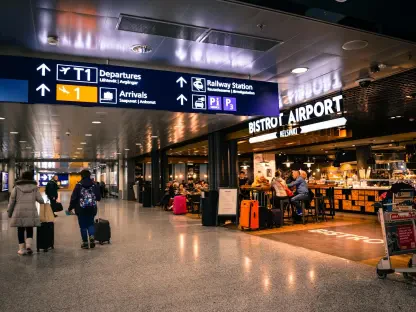As enterprises continue to embrace multi-cloud infrastructures, especially in regulated industries, the need for robust security measures has never been more critical. One primary challenge faced by modern organizations is managing the security intricacies presented by hybrid and multi-cloud adoption. These challenges include inconsistent policies, visibility gaps, and the ever-expanding attack surface, all requiring innovative and proactive solutions.
Addressing Policy Inconsistencies and Visibility Gaps
Unified Cloud Security Posture Management
One of the foremost strategies to address these challenges is by implementing Unified Cloud Security Posture Management (CSPM). CSPM centralizes and streamlines visibility, policy enforcement, and compliance across diverse cloud environments. By automating these processes, organizations can reduce the complexity of managing different security protocols and compliance requirements for each cloud service provider (CSP). This centralized approach not only enhances regulatory adherence but also accelerates incident response by providing a holistic view of potential security threats across all platforms.
Moreover, the integration of CSPM tools aids in identifying misconfigurations and security vulnerabilities that could otherwise remain undetected. Regular security audits and compliance checks are automated, further ensuring that all organizational policies are consistently applied regardless of the cloud provider in use. Furthermore, the centralized visibility offered by CSPM tools enables organizations to detect and respond to suspicious activities more swiftly. This agile response capability is crucial in today’s fast-paced digital landscape, where threats continue to evolve rapidly.
Zero Trust Architecture
Another pivotal strategy to mitigate security risks in multi-cloud environments is the adoption of a zero trust architecture. Unlike traditional security models, zero trust does not automatically trust any entity inside or outside the network perimeter. Instead, every access request must undergo rigorous validation regardless of its origin. This approach significantly reduces the likelihood of unauthorized access, thereby safeguarding sensitive data and digital assets.
In a zero trust environment, continuous monitoring and validation protocols ensure that only authenticated and authorized users can access cloud resources. Adaptive authentication mechanisms and granular access controls further enhance security by tailoring access permissions based on user behavior and contextual factors such as location and device type. By consistently enforcing these stringent controls, organizations can maintain digital trust and prevent security breaches that could otherwise result in massive data loss and regulatory penalties. Implementing zero trust principles also helps streamline security management by establishing a unified framework applicable across various cloud platforms and services.
Leveraging Advanced Security Models
Cloud-Native Security Solutions
Embracing cloud-native security solutions is another critical strategy that enhances the overall security posture of multi-cloud environments. These solutions are designed to integrate seamlessly with cloud architectures, boosting visibility, automation, and policy enforcement capabilities. Cloud-native tools can provide real-time data on network traffic, user activities, and potential threats, offering insights that are crucial for proactive security management.
Additionally, these solutions facilitate the automation of routine security tasks, such as vulnerability scanning and patch management, freeing up resources for more strategic initiatives. By embedding security within the cloud infrastructure itself, organizations can enhance their ability to defend against advanced threats. This approach ensures that security remains an integral part of the deployment process rather than an afterthought, reducing the risk of vulnerabilities arising from misconfigurations or human error.
Continuous Security Validation
Regularly conducting security validation through simulated real-world attacks helps organizations identify and rectify vulnerabilities before they can be exploited by malicious actors. Continuous security validation involves the use of penetration testing, red teaming, and other techniques to assess the effectiveness of existing security measures. These proactive efforts ensure that security controls remain robust and adaptive to emerging threats.
Moreover, continuous validation fosters a culture of vigilance and preparedness within the organization. Teams are better equipped to recognize and respond to potential threats, minimizing downtime and ensuring business continuity. Through ongoing assessments, organizations can continuously refine their security strategies, ensuring they remain resilient against the ever-evolving threat landscape.
Integrating AI and Automation
Advanced Threat Detection
Leveraging artificial intelligence (AI) and automation in security operations is a highly effective strategy for enhancing threat detection and response. AI-driven tools can analyze vast amounts of data quickly, identifying patterns and anomalies that may indicate a security breach. These tools excel at detecting complex threats, such as zero-day exploits, that may evade traditional security measures.
The integration of AI with security operations allows for more accurate and faster threat detection, reducing the mean time to detect (MTTD) and the mean time to respond (MTTR) to security incidents. By automating routine tasks, such as log analysis and incident reporting, security teams can focus on more strategic initiatives, further enhancing the organization’s overall security posture. This capability is particularly crucial in multi-cloud environments, where the volume and variety of data can be overwhelming without advanced analytical tools.
Enhanced Security Operations
The adoption of AI and automation not only improves threat detection but also enhances the efficiency of security operations. Automating incident response processes ensures that security teams can quickly and effectively mitigate threats, minimizing their impact on business operations. AI-powered tools can also assist in forensic analysis, providing detailed insights into how a breach occurred and what steps can be taken to prevent similar incidents in the future.
By integrating AI and automation into their security strategies, organizations can build a more resilient and adaptive security posture. This proactive approach ensures that security measures keep pace with the rapidly changing threat landscape, maintaining business continuity and protecting valuable digital assets.
Future Considerations for Multi-Cloud Security
As companies increasingly adopt multi-cloud infrastructures, particularly in regulated industries, ensuring robust security measures has never been more crucial. One of the main hurdles modern organizations face is the management of the complex security intricacies that come with hybrid and multi-cloud environments. These intricacies pose several challenges, such as inconsistent security policies across different platforms, visibility gaps where monitoring and insights are limited, and a growing attack surface that makes cybersecurity efforts more complex. Addressing these challenges demands innovative, proactive solutions. For companies to effectively navigate these waters, they need to implement comprehensive security frameworks that include advanced monitoring tools, policy standardization, and enhanced threat detection mechanisms. With a focus on proactive defense and seamless integration, organizations can better protect their data and operations within multi-cloud settings. The ultimate goal remains to maintain security integrity while leveraging the flexibility and efficiency that multi-cloud infrastructures offer.









